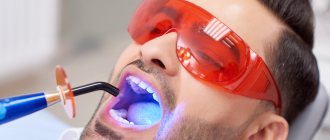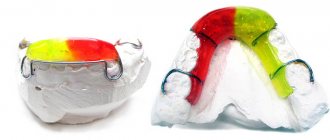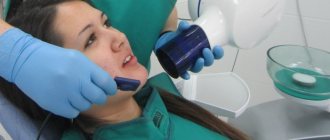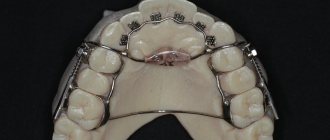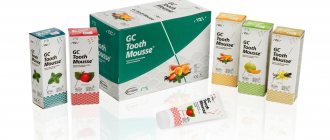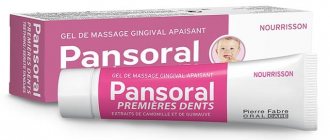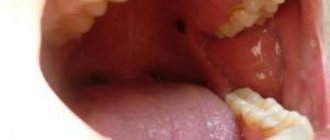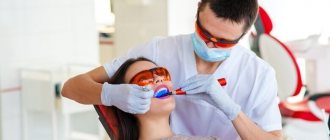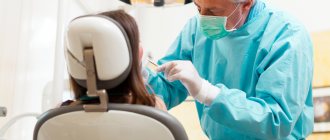The Optodan laser device is reliable, simple, convenient and safe to use. Small dimensions and weight allow it to be used at home or at the bedside of bedridden patients. The capabilities of the Optodan laser device are indispensable when providing medical care to weakened children. Laser light not only fights a specific disease, but also has a beneficial effect on the immune system.
Treatment methods using the Optodan device are based on the mechanism of multifactorial action of infrared laser light generated in a pulsed mode. The Optodan laser device has a resonant effect on the cells of the body, activates and stimulates the functional activity of vital processes, which leads to an increase of up to 30% in the effectiveness of laser therapy. In some cases, the therapeutic effect is solely a consequence of cellular-systemic resonance.
Mechanism of therapeutic action
- Pronounced anti-inflammatory and analgesic effect;
- Improving microcirculation, normalizing the permeability of vascular walls, thrombolytic effect;
- Normalization of metabolic processes, increasing oxygen levels in tissues;
- Significantly accelerates the regeneration of soft and bone tissues, preventing the formation of scars;
- Stimulation of the immunological defense system;
- Reducing the pathogenicity of pathogenic microflora, increasing its sensitivity to antibiotics.
How the device works
When creating the “Optodan” apparatus, special studies of the action of lasers with differentiated intensities were carried out. At the same time, physical indicators were noted: penetration, reflection, dispersion.
These studies made it possible to conclude that there is an obvious connection between radiation and improved health, as well as to determine the optimal value for the therapeutic effect on pathologies that are inflammatory or dystrophic in nature, and to influence the acceleration of tissue regeneration.
In this case, a combination of functional diagnostic approaches was used. At the same time, indicators of blood circulation and oxygen metabolism, cell vital activity were monitored, and the effectiveness of the therapeutic effect of the laser was assessed.
An important distinguishing feature of the device from its analogues is its influence on the cell as a separate life system, taking into account its own parameters. The functionality of organelles and membrane cell complexes increases, and the stimulating effect of the body’s vital functions is obvious. The effectiveness of laser therapy increases up to 30%. It is cellular resonance that becomes the key to obtaining a healing result.
Indications for use
To speed up the rehabilitation of patients after surgery, fractures and severe injuries, to exclude purulent complications. With fractures, the rate of callus growth more than doubles, including in older people. The device is highly effective in treating injuries resulting from crushing or squeezing.
For the prevention of venous thromboembolic complications (VTEC) after operations on the lower extremities (hip and knee replacement, metal osteosynthesis of the femur and high limb amputation).
The characteristics of the “Optodan” device provide the basic requirements for preparing athletes for competitions and effectively eliminating the consequences of minor injuries. The use of the Optodan laser device eliminates problems associated with doping control.
For the prevention and treatment of caries in the stage of demineralization and chalk spots, pulpitis, periodontitis, periodontal diseases and oral mucosa, inflammatory diseases of the salivary glands, lymphadenitis, osteomyelitis, etc.
For the treatment of hemorrhoids and rectal fissures (as the main remedy).
In cosmetology, the laser therapeutic device “Optodan” is used both independently and in combination with other means. Preliminary application of cream or other active substance enhances its absorption into the skin (laser phoresis).
"Optodan" is used for:
- Elimination of skin irritation and inflammation after hygienic facial cleansing;
- Prevention of skin aging and the appearance of wrinkles, elimination of dryness and sagging skin, increasing its firmness and elasticity;
- Treatment of pyoderma, furunculosis;
- Accelerating wound healing and preventing scar formation after acne, mole removal, after plastic surgery;
- Treatment of acne and oily skin.
For prevention and treatment:
- Arthrosis, arthritis, osteochondrosis;
- Rhinitis, tonsillitis, sinusitis, tonsillitis, otitis;
- Neuralgia;
- Myocardial infarction, ischemic disease;
- Hypertension;
- Mastitis, prostatitis;
- Hard-to-heal wounds and ulcers, bedsores.
Description and purpose of the device
Long-term research suggests a strong therapeutic effect of the device.
The optimal values, ease of use and reliability of the device give it undeniable advantages in the medical field. The impact is carried out at the cellular level, the systemic resonance of cells is launched. The device is effective and easy to use:
- promotes wound healing;
- restores the integrity of the skin and mucous membranes;
- relieves pain;
- facilitates the inflammatory process;
- allows you to quickly and effectively deal with skin imperfections after surgical interventions;
- affects microorganisms and reduces the pathogenicity of microflora;
- is an excellent means of prevention: oxygen metabolism in the body improves;
- shortens treatment time.
IMPORTANT! The use of the device should be agreed with the attending physician; there may be contraindications and individual intolerance.
Methods of use
The surface irradiation method is used when affecting the affected surface of the skin (open wound, burn, purulent process, etc.). When irradiating the affected surface, the window of the emitting unit of the device is directed to the lesion at an angle of 90°, at a distance of 5 - 7 mm from its surface. The divergence angle of the laser beam is 36°. Deviation of the laser beam axis from a right angle leads to an increase in the reflection of light energy from the irradiated surface, especially if ointments, gels, etc. were used. The manipulator is moved in a circular motion clockwise over the surface of the wound in the direction from its periphery to the center. If the wound is extensive, then its surface is conventionally divided into fields of 4 - 6 cm2 and each field is irradiated sequentially. The surface of the wound can be irradiated through a gauze bandage no more than three layers thick.
The projection irradiation method is used when it is necessary to expose objects of internal pathology to laser light. In this case, the window of the emitting unit of the “Optodan” apparatus is directed to the projection, for example, of the joint space (arthritis, arthrosis), palatine tonsils (angina) or internal injuries (postoperative, post-traumatic rehabilitation). During projection irradiation, the tip of the manipulator may come into contact with the skin.
The method of non-invasive (percutaneous) blood irradiation stimulates the immune system, has a desensitizing effect, and increases the sensitivity of pathogenic microflora to antibiotics. With non-invasive blood irradiation, the tip of the manipulator is directed to any large vein at the place of its closest approach to the surface of the body. The main indications for blood irradiation are decreased immunity after illness, purulent-inflammatory diseases, burns, etc.
The method of laser reflexology refers to systemic methods of influencing the body’s self-regulation mechanism. The area of influence is reflexogenic zones and points. To conduct a laser reflexology session, a specialized attachment is attached to the “Optodan” device (* on request).
Specifications:
- Radiation source Laser diode
- Radiation wavelength, µm 0.85
- Laser pulse power, W 5
- Pulse repetition frequency, Hz Mode I – 80 – 100
- Mode II - 2000 - 3000
- Pulse duration, ns40 - 100
- Power, V/Hz ~ 220/50
- Power consumption, VA no more than 10
- Weight, kg no more than 0.6
| Weight | 0.71 kg |
| Dimensions | 23 x 15.5 x 8 cm |
| Radiation source | Laser diode |
| Radiation wavelength, microns | 0,85 |
| Laser pulse power, W | 5 |
| Pulse repetition frequency, Hz (mode I) | 80 — 100 |
| Pulse repetition frequency, Hz (mode II) | 2000 — 3000 |
| Pulse duration, ns | 40 — 100 |
| Power, V/Hz | ~ 220/50 |
| Power consumption, VA | no more than 10 |
| Warranty, months | 18 |
A course of treatment
Laser therapy is carried out in courses of up to 15 procedures. It is not advisable to carry out a larger number of procedures, due to a decrease in the body’s susceptibility.
Studies have shown that it is optimal to carry out two or three courses of 12 procedures with a break of one month. The positive effect of laser therapy appears after 3 to 5 procedures, but can also occur after completion of the course.
For chronic diseases, it is necessary to carry out preventive courses of laser therapy during the period of possible exacerbation, usually in spring and autumn. The frequency of procedures and the duration of the procedure depend on the disease and method of treatment.
Laser light increases the effectiveness of analgesics and antibiotics. If external agents (ointments, cosmetic creams, gels, etc.) were used before a laser therapy session, then the depth of penetration of the drugs into the tissue increases.
Advantages of the Optodan laser
- The treatment is painless; moreover, the laser itself numbs the pain.
- Suitable for patients of any age.
- The device operates silently, without causing psychological discomfort.
- The beam works only on the problem area, without touching healthy tissue.
- The procedure takes place much faster than other treatment methods.
- There is no risk of infection, since the treatment is carried out without contact of the equipment with the tissues of the oral cavity.
- The device is completely safe and does not require eye protection.
Contraindications
Contraindications for low-frequency magnetic therapy are:
- acute period of heart attacks and strokes;
- coronary heart disease with heart rhythm disturbances;
- pregnancy;
- bleeding.
Also contraindications include epileptic syndrome, fever above 38°C, and severe exhaustion.
High-intensity magnetic therapy is contraindicated in patients with:
- implanted pacemakers;
- epilepsy;
- thyrotoxicosis;
- oncological diseases;
- within 2 months after myocardial infarction;
- systemic blood diseases;
- cholelithiasis;
- bone fractures before immobilization.
What is FDM therapy
FDM therapy (fascial distortion model) is a type of manual therapy, a treatment based on the “fascial distortion model” (disorders). Fascia is a sheath of connective tissue covering organs, blood vessels, nerves, and muscles. Due to deformation, or distortion, of the fascia, nerves are pinched, blood vessels are compressed, and blood and lymph flow are disrupted. These phenomena lead to pain and impaired motor activity in the joints. FDM therapy is aimed at eliminating such fascial disorders.
FDM therapy has found wide application in sports medicine
Who came up with the method
In fact, FDM therapy has been around for several years - since 1991. American osteopathic doctor Stephen Typaldos noticed that patients complaining of pain perform certain movements. Each fascial disorder corresponds to a specific gesture, from which the physician compiled the “language of pain.” For each gesture, he proposed an individual treatment regimen, which formed the basis of modern FDM therapy.
FDM therapy has been used in Russia since 2005. It was then that educational seminars for doctors began to be held in the country. Today, the technique is actively used in large cities by orthopedists, traumatologists, neurologists, sports doctors, exercise therapy instructors, chiropractors and osteopaths.
What is FDM therapy and how is this art of manual therapy taught?
Strength of effect
In studies, magnetic therapy has a greater effect on the nervous and cardiovascular systems. Main effects were associated with decreased pain, anxiety, and improved quality of life. That is, if the problem contains one or more of these components, a positive effect may be noted.
To be satisfied with the result, you cannot have high expectations. Since the mechanism of action of the magnetic field on the body is quite difficult to perceive, misconceptions may arise, the image of a “magic pill” or hope for a miraculous healing may be formed when doctors could not help. Physiotherapy is always combined, and although it may be an important part of treatment, it will not be the only one. A typical example would be the image of an overweight person with knee pain. Courses of anti-inflammatory drugs help with varying degrees of success. One of the key reasons is excess weight, which leads to pain. Buying a device without adjusting your lifestyle and losing weight is unlikely to give the desired effect.
First, you should consult a specialist, follow the recommendations as much as possible, and then with peace of mind you can supplement this with magnetotherapy at home.
Symptoms:
- Aching pain in the joint, aggravated by movement and stress on the affected joint. The pain usually gets worse towards the end of the day.
- Swelling appears only during exacerbations, is quite noticeable and causes great inconvenience.
— Aching and crunching in the joint, and at first the crunching is not strong, but without treatment, the crunching gets stronger and is even audible to others. Crunching in the joints is explained by the fact that gas bubbles located in the synovial fluid begin to burst when the joint capsule is stretched, thus a cracking or crunching sound is heard. Crunching in the joint is the first of the early symptoms of osteoarthritis.
- Stiffness - restriction of joint mobility. The patient has difficulty flexing and straightening the joint.
More often, arthrosis develops in the hip, knee and metatarsal-phalangeal joints. Moreover, gonarthrosis (arthrosis of the knee joints) is more common in women, while coxarthrosis (arthrosis of the hip joints) is more common in men.
For gonarthrosis _
pain in the knee is localized on the front or inner lateral surface of the joint, significantly increases when walking and decreases at rest, the joint is swollen, movements in the knee are limited. Small, dense, painful nodules form in the muscles located near the knee joint.
Coxarthrosis is the most common pathology among joint diseases in humans. The main causes of this disease are the violation or absence of straight posture, the habit of sitting with legs crossed, leaning on one arm, sitting at an angle to the table and sleeping, turning at the hip on the bed. The main symptom of coxarthrosis is pain in the groin, radiating down the front and side of the thigh, sometimes to the buttock or knee. At rest, the pain subsides, but when you try to get out of a chair or bed, it intensifies. It is difficult for a person suffering from coxarthrosis to move his leg to the side, it is difficult to pull his leg to his chest, it is difficult to put on socks and shoes, he is unlikely to be able to sit on a chair “astride”, spreading his legs wide apart, or will do it with great difficulty. The leg almost stops rotating (from the hip) to the right and left or rotates due to movements of the lower back.
